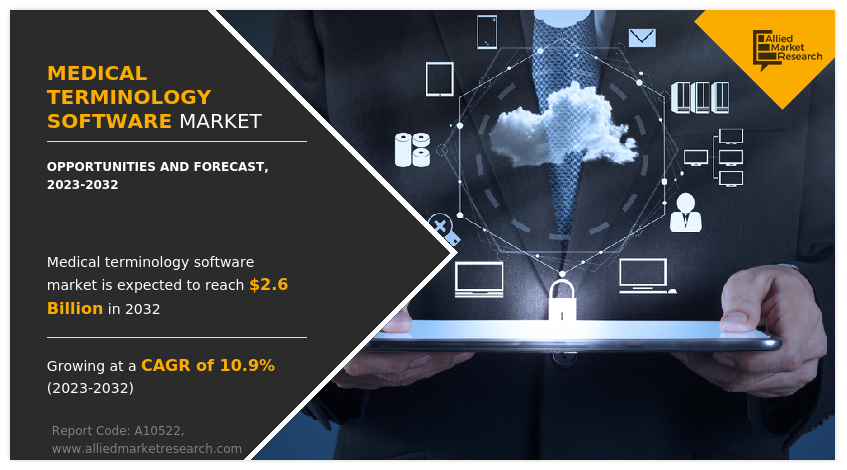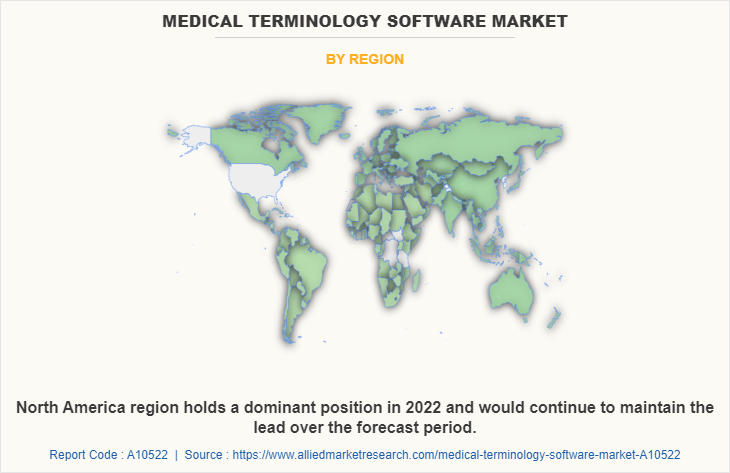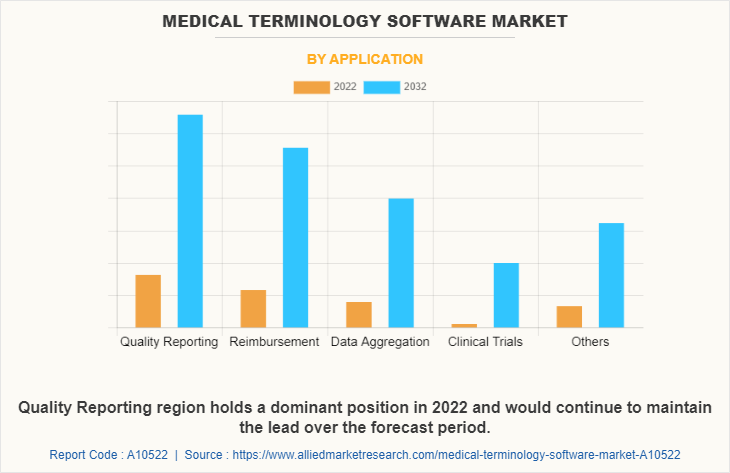
In a recent report released by Allied Market Research, titled “Medical Terminology Software Market by Application and End User: Global Opportunity Analysis and Industry Forecast, 2023-2033,” insightful findings shed light on the robust trajectory of the global medical terminology software industry.
The comprehensive analysis reveals that in 2022, the industry boasted a substantial revenue of $0.9 billion, signaling a dynamic landscape within the healthcare technology sector. Projections indicate a notable surge, with the market poised to burgeon to an estimated $2.6 billion by the year 2032. This impressive growth trajectory is underpinned by a compound annual growth rate (CAGR) of 10.9% from 2023 to 2032.
Download Sample Copy- https://www.alliedmarketresearch.com/request-sample/10887
Prime determinants of growth
- Adoption of Electronic Health Records (EHRs): The widespread adoption of Electronic Health Records (EHRs) is a primary driver propelling the growth of the medical terminology software market. As healthcare providers transition towards digitized and integrated systems, the need for advanced software solutions to manage and interpret medical data becomes paramount. Medical terminology software seamlessly integrates with EHRs, facilitating efficient data management and enhancing overall healthcare service delivery.
- Prevalence of Noncommunicable Diseases (NCDs): The escalating prevalence of noncommunicable diseases (NCDs) globally contributes significantly to the demand for medical terminology software. The software’s ability to streamline data related to chronic conditions, facilitate accurate diagnosis, and support effective treatment planning positions it as an indispensable tool in the contemporary healthcare landscape.
- Focus on Quality Reporting and Regulatory Compliance: Healthcare providers worldwide are increasingly emphasizing quality reporting and regulatory compliance to meet stringent standards and enhance patient care. Medical terminology software plays a crucial role in ensuring accurate and standardized reporting, aiding healthcare institutions in adhering to regulatory requirements. This heightened focus on quality and compliance acts as a catalyst for the continued growth of the medical terminology software market.
- Data Privacy Concerns: Despite the positive growth indicators, data privacy concerns pose a potential restraint on market expansion. The sensitive nature of healthcare data necessitates robust security measures, and any perceived lapses in data privacy may impede the adoption of medical terminology software. Industry stakeholders must proactively address these concerns to build and maintain trust among users.
- Integration of Artificial Intelligence (AI): The integration of artificial intelligence (AI) into medical terminology software opens new vistas for innovation and efficiency. AI-driven functionalities enhance the software’s capabilities, enabling advanced data analysis, predictive modeling, and personalized healthcare insights. This integration presents lucrative opportunities for market players to develop cutting-edge solutions that further elevate the utility and sophistication of medical terminology software.
Procure Complete Report (243 Pages PDF with Insights, Charts, Tables, and Figures) https://www.alliedmarketresearch.com/checkout-final/medical-terminology-software-market

North America to maintain its dominance by 2031
